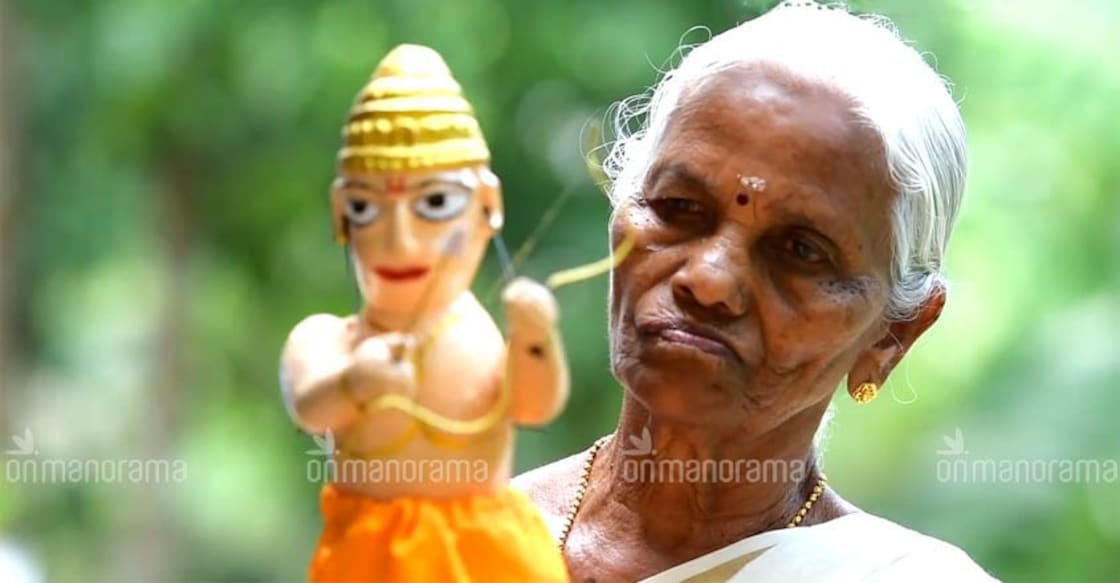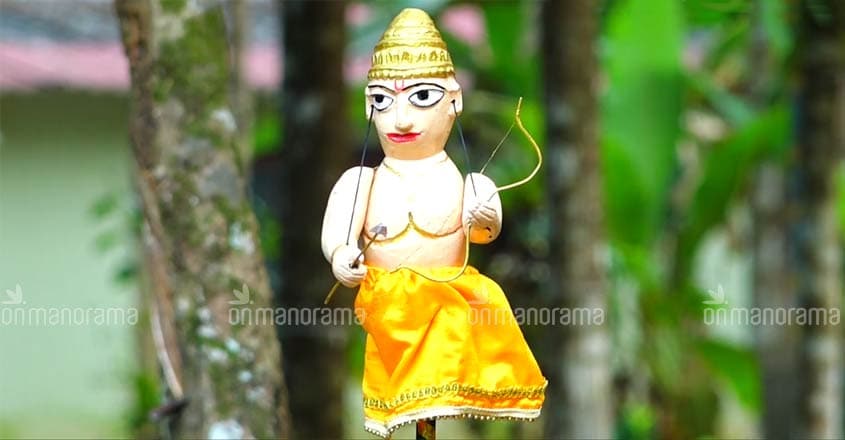Padma Shri Pankajakshi Amma's 'lip service' keeps a dying art alive

Mail This Article
It is on the tip of her upper lips that Moozhikkal Pankajakshi Amma's puppets unleash the legends of the Mahabharata or the fiery Rama - Ravana war. You cannot watch this rare form of puppetry without being awed by the impeccable concentration and perfection of the artist.
The sole practitioner of the nokku vidya paavakali, Moozhikkal Pankajakshi Amma has been awarded the Padma Shri this year for keeping alive this unique tradition. Pankajakshi, who is 84 years old, is incredibly proud about this honour which she thinks is the perfect reward for her hard work and dedication.
Pankajakshi can talk for ages, explaining what nokku vidya paavakali is and about the artistic nuances of this puppetry. However, she feels her age is catching up to her as it is a bit difficult for her to talk. So, it is her granddaughter Ranjini who explains about the puppetry. Pankajakshi has passed on this unique art form to the next generation by training Ranjini so that the traditional art wouldn’t pass into oblivion.
The puppets speak
Most people may be familiar with the thol paavakoothu and the nool paavakoothu which are the popular forms of puppetry. The nokku vidya paavakali too belongs to the traditional genre of puppetry. In this art form, the puppets that are fixed on sticks are balanced on the upper lips. The puppets are carved in the blackboard tree’s wood and are fixed on sticks that are two inches-long. The puppets move when the threads or strings attached to them are pulled in unique ways.
Traditional musical instruments like ginjara or thudi and kaimani accompany the nokku vidya paavakali. She mastered various story lines from Mahabharatha and Ramayana. The strings of the puppets are pulled according to the rhythm of the background songs. The puppets are balanced on the upper lips and the strings are pulled using hands. It is this unique style that makes nokku vidya paava kali stand out from other forms of puppetry.
The balancing act

It was from her mother that Pankajakshi learned this centuries-old art form. This is usually performed by the Velan community. Balancing the puppets on the upper lips is no easy job. It takes years of practice and hard work to perfect this art. Pankajakshi began training when she was just 11-years-old and continues to perform even at the age of 84. Eyesight plays a pivotal role for performing the nokku vidya paavakali. Pankajakshi had taken a long break of ten years when her eyesight began diminishing. It was then that Ranjini began training and performing.
“I began learning at the age of 8. It took me two years to get my act right in terms of balance. There are many stages in the training. First we need to practice balancing and then comes the movements. Besides, there are many other complementary styles and forms as well like the ammanam, or balancing the puppets on a knife’s tip while holding the knife with your mouth. Instead of holding the puppets on your upper lips you could balance them on a string attached onto a special arrow. Attaching eerikil (midrib of coconut leaf) using tongue are some of the technique that you need to learn. It took me five years to learn this art form,” says Ranjini.
Income from dakshina

Now, the nokku vidya paavakali is performed mainly in connection with tourism-related programmes and on during the temple festivals. Long back, artists used to perform specially for influential families ten days before Onam. Then, this art form was known by the names Onamnkali or Onamthullal. People who watch the performance at one place would invite the artists to different places. Artists never demand money for the performances. They would accept dakshina or a token of appreciation from their patrons. “There is an item called kinnam karakkal in nokku vidya paavakali. You have to perform it standing erect. A plate would be balanced on top of a stick and you need to rotate the plate by moving the stick. After rotating the plate for some time, you would tap on the stick with the other hand. The plate then falls into your hand. You would then place that plate in front of the audience and they would give the dakshina in it. This is how the artists, in the olden days, earned their living,” explains Ranjini.

